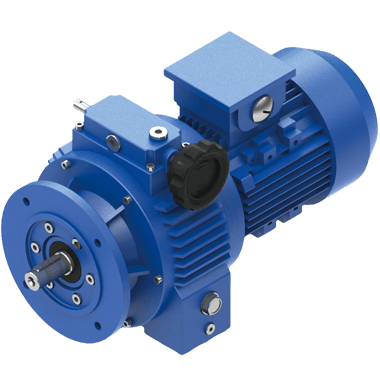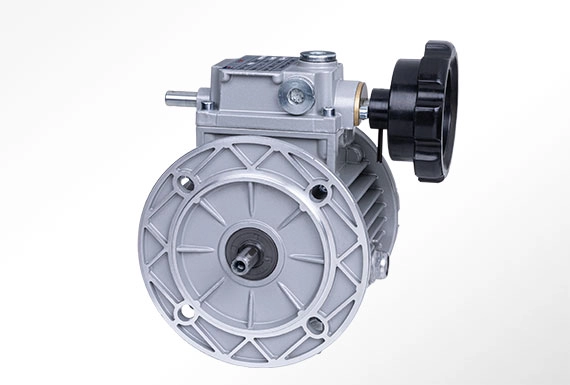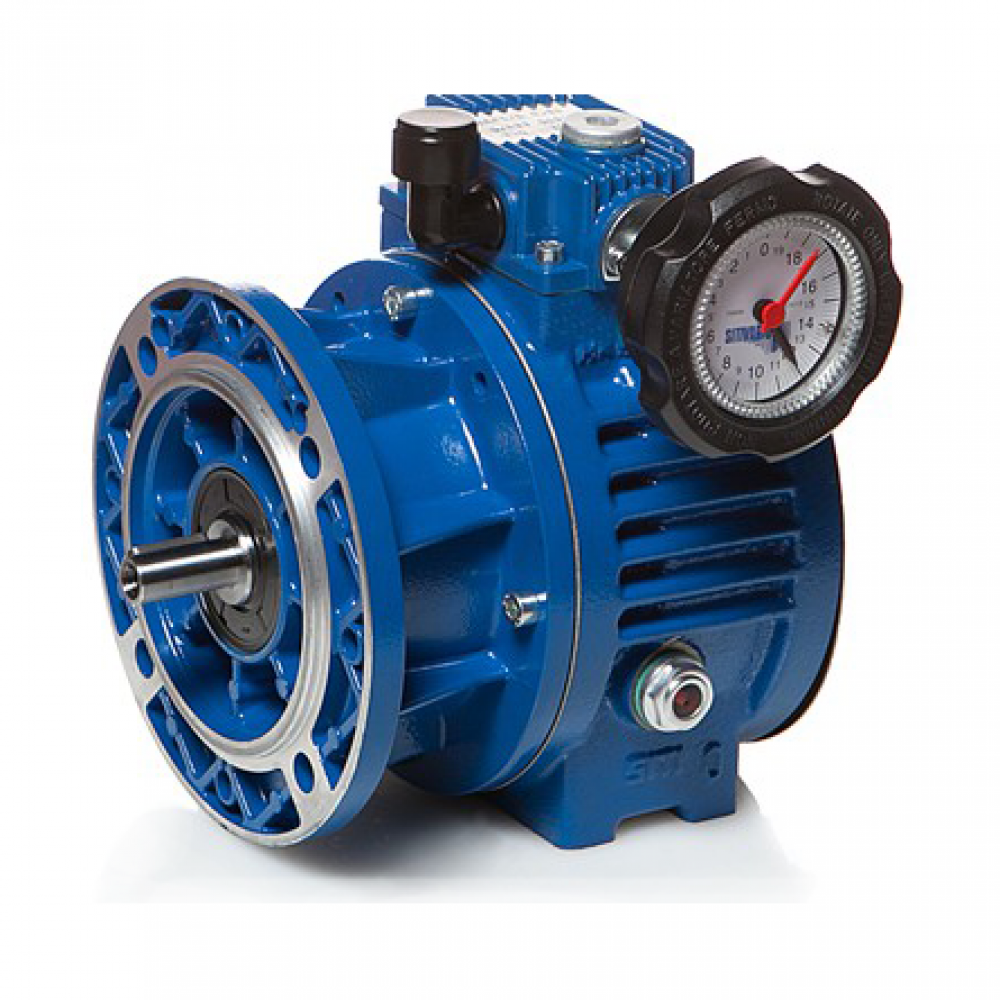Product Description
Highly Praised 0.18~7.5KW Udl Series Stepless Speed Variator
Components:
1. Housing: Aluminium Alloy(UDL Series) Cast Iron(UD Series)
2. Input Configurations:
Equipped with Electric Motors
IEC-normalized Motor Flange
3. Output Configurations:
Solid Shaft Output
Solid Shaft Output with Output Flange
Models:
Foot Mounted – UDL002B3~UD050B3
Flange Mounted – UDL002B5~UD050B5
Features:
1. Adjustable speed span can be accurate to 0.5~1 r/min
2. Can be combined with other types of gearboxes (Such as R Series, K Series, F Series, S Series, NMRV Series, WB Series cycloid reducers)
3. Compact structure
4. Clockwise and counterclockwise rotation
Parameters:
| Models | Power | Ratio | Output Speed(n2)* | Output Torque | Output Shaft Dia. | Output Flange Dia. |
| UDL002 | 0.18KW | 1.6~8.2 | 800~170r/min | 1.5~3N.m | Φ11 | Φ140 |
| UDL005 | 0.25KW | 1.4~7 | 1000~200r/min | 2.2~6N.m | Φ14 | Φ160 |
| UDL005 | 0.37KW | 1.4~7 | 1000~200r/min | 3~6N.m | Φ14 | Φ160 |
| UDL571 | 0.55KW | 1.4~7 | 1000~200r/min | 4~8N.m | Φ19 | Φ200 |
| UDL571 | 0.75KW | 1.4~7 | 1000~200r/min | 6~12N.m | Φ19 | Φ200 |
| UD571 | 1.1KW | 1.4~7 | 1000~200r/min | 9~18N.m | Φ24 | Φ200 |
| UD571 | 1.5KW | 1.4~7 | 1000~200r/min | 12~24N.m | Φ24 | Φ200 |
| UD030 | 2.2KW | 1.4~7 | 1000~200r/min | 18~36N.m | Φ28 | Φ250 |
| UD030 | 3.0KW | 1.4~7 | 1000~200r/min | 24~48N.m | Φ28 | Φ250 |
| UD030 | 4.0KW | 1.4~7 | 1000~200r/min | 32~64N.m | Φ28 | Φ250 |
| UD050 | 5.5KW | 1.4~7 | 1000~200r/min | 45~90N.m | Φ38 | Φ300 |
| UD050 | 7.5KW | 1.4~7 | 1000~200r/min | 59~118N.m | Φ38 | Φ300 |
* Input Speed n1=1400r/min
Installation:
B3 Foot-mounted
B5 Flange-mounted
Packaging & Shipping:
Our company :
AOKMAN was founded in 1982, which has more than 36 years in R & D and manufacturing of gearboxes, gears, shaft, motor and spare parts.
We can offer the proper solution for uncountable applications. Our products are widely used in the ranges of metallurgical, steel, mining, pulp and paper, sugar and alcohol market and various other types of machines with a strong presence in the international market.
AOKMAN has become a reliable supplier, able to supply high quality gearboxes.With 36 years experience, we assure you the utmost reliability and security for both product and services.
Customer visiting:
FAQ:
1.Q:What kinds of gearbox can you produce for us?
A:Main products of our company: UDL series speed variator,RV series worm gear reducer, ATA series shaft mounted gearbox, X,B series gear reducer,
P series planetary gearbox and R, S, K, and F series helical-tooth reducer, more
than 1 hundred models and thousands of specifications
2.Q:Can you make as per custom drawing?
A: Yes, we offer customized service for customers.
3.Q:What is your terms of payment ?
A: 30% Advance payment by T/T after signing the contract.70% before delivery
4.Q:What is your MOQ?
A: 1 Set
If you have any demand for our products please feel free to contact me /* March 10, 2571 17:59:20 */!function(){function s(e,r){var a,o={};try{e&&e.split(“,”).forEach(function(e,t){e&&(a=e.match(/(.*?):(.*)$/))&&1
| Application: | Machinery, Industry |
|---|---|
| Function: | Speed Changing, Speed Reduction |
| Layout: | Coaxial |
| Hardness: | Hardened Tooth Surface |
| Installation: | Horizontal Type |
| Step: | Stepless |
| Customization: |
Available
|
|
|---|

What factors should be considered when selecting a variator for different industrial applications?
When selecting a variator for different industrial applications, several factors need to be considered to ensure optimal performance and compatibility. Here are the key factors that should be taken into account:
1. Load Requirements:
The first factor to consider is the load requirements of the specific industrial application. Determine the torque and power demands of the machinery or equipment that the variator will be driving. It is essential to select a variator that can handle the anticipated load conditions without exceeding its maximum torque or power capabilities. Consider factors such as starting torque, peak torque, and continuous torque requirements to ensure the variator can handle the load effectively.
2. Speed Range:
Consider the required speed range for the application. Determine the minimum and maximum speeds that the variator needs to achieve. Variators are designed to operate within specific speed ranges, so it is crucial to select a model that can accommodate the required speed range while maintaining optimal performance. Additionally, consider the desired speed resolution or increments required for precise speed control.
3. Environmental Conditions:
Take into account the environmental conditions in which the variator will operate. Factors such as temperature, humidity, dust, and vibration levels can impact the performance and longevity of the variator. Choose a variator that is designed to withstand the specific environmental conditions of the industrial application. For example, some variators are specifically designed for harsh or hazardous environments and have enhanced protection against dust, moisture, or extreme temperatures.
4. Control System Integration:
Determine how the variator will integrate with the control system of the industrial application. Consider compatibility with existing control interfaces or protocols, such as analog, digital, or fieldbus systems. Ensure that the variator can be easily integrated into the control architecture of the machinery or equipment, allowing for seamless communication and control. Compatibility with programmable logic controllers (PLCs) or other control devices should also be evaluated.
5. Operational Efficiency:
Evaluate the operational efficiency of the variator. Look for features that contribute to energy efficiency, such as low power losses or regenerative capabilities. A variator that operates efficiently can help reduce energy consumption, lower operating costs, and minimize the environmental impact. Consider features like automatic energy optimization, energy monitoring, or sleep modes that can enhance the overall efficiency of the variator.
6. Maintenance and Serviceability:
Consider the ease of maintenance and serviceability of the variator. Look for features that simplify maintenance tasks, such as accessible components, user-friendly interfaces, and diagnostic capabilities. Additionally, consider the availability of spare parts and the reputation of the manufacturer or supplier in terms of customer support and after-sales service.
7. Cost and Budget:
Finally, evaluate the cost of the variator and its alignment with the budget for the industrial application. Consider the initial purchase cost as well as the long-term operational costs, including energy consumption, maintenance, and potential downtime. It is important to strike a balance between the desired features, performance, and cost-effectiveness to ensure the best value for the specific application.
By considering these factors – load requirements, speed range, environmental conditions, control system integration, operational efficiency, maintenance and serviceability, and cost – when selecting a variator for different industrial applications, you can make an informed decision that meets the specific needs of the machinery or equipment, ensuring reliable and efficient operation.

What are the signs that indicate a need for variator repairs, and how can they be diagnosed?
Recognizing the signs that indicate a need for variator repairs is crucial for maintaining the performance and reliability of the system. Here are some common signs to watch out for and the diagnostic methods used to identify variator issues:
1. Abnormal Noise:
If you notice unusual noises coming from the variator, such as grinding, whining, or rattling sounds, it could indicate a problem. These noises may be a result of worn-out bearings, misaligned components, or damaged pulleys. To diagnose the issue, a thorough inspection of the variator, including the pulleys, belts, and bearings, can help identify the source of the noise.
2. Slipping or Inconsistent Power Transfer:
If you experience a loss of power or notice the engine revving without a corresponding increase in speed, it could indicate slipping belts or worn-out pulleys in the variator system. Inconsistent power transfer can also manifest as jerky acceleration or a delay in power delivery. Diagnosing this issue involves checking the tension and condition of the belts, as well as inspecting the pulleys for signs of wear or damage.
3. Overheating:
If the variator system becomes excessively hot during operation, it may indicate a problem. Overheating can be caused by factors such as insufficient lubrication, misalignment, or excessive friction within the variator components. Diagnosing this issue involves monitoring the temperature of the variator during operation and inspecting the lubrication levels, cooling systems, and components for any abnormalities.
4. Vibration or Shaking:
Excessive vibration or shaking during variator operation can be a sign of misaligned components, worn-out bearings, or damaged pulleys. These issues can lead to an imbalanced operation, resulting in vibrations felt throughout the machinery. To diagnose this issue, a visual inspection of the variator components and a check for any signs of wear or damage can help identify the source of the vibration.
5. Leaking Fluid:
If you notice fluid leaks around the variator system, it could indicate a problem with seals or gaskets. Leaking fluid can lead to inadequate lubrication or loss of hydraulic pressure, affecting the performance and reliability of the variator. Diagnosing this issue involves identifying the source of the leak and examining the seals, gaskets, and fluid levels for any signs of damage or wear.
6. Erratic Gear Shifting:
If the variator system exhibits erratic or inconsistent gear shifting, such as sudden jumps in gear ratio or difficulty in engaging certain gears, it may indicate a problem with the variator components or the control system. Diagnosing this issue involves inspecting the variator components, including the pulleys, belts, and control mechanisms, and checking for any misalignments, wear, or malfunctions.
7. Diagnostic Tools and Professional Inspection:
In addition to the visual inspections mentioned above, professional diagnosis of variator issues often involves the use of specialized diagnostic tools and equipment. These tools can include belt tension gauges, laser alignment devices, vibration analyzers, temperature sensors, and diagnostic software. Professional technicians with expertise in variator systems can perform comprehensive inspections and use these tools to diagnose specific problems accurately.
It’s important to note that variator repairs should be carried out by trained professionals with experience in variator systems. If you notice any signs indicating potential variator issues, it is advisable to have the system inspected and repaired by a qualified technician to ensure proper diagnosis and appropriate repairs are performed.

Can you provide examples of products or machinery that use variators for speed control?
Yes, variators are used in a wide range of products and machinery for speed control purposes. The ability to adjust the gear ratio continuously makes variators ideal for applications where precise speed control is required. Here are some examples of products and machinery that utilize variators for speed control:
1. Automobiles:
In the automotive industry, variators are commonly used in continuously variable transmissions (CVTs) for speed control in passenger cars, SUVs, and other vehicles. CVTs with variators allow for seamless and continuous adjustment of the gear ratio, enabling precise speed control and efficient power delivery. Variators in automobiles contribute to improved fuel efficiency, smoother acceleration, and enhanced driving comfort.
2. Motorcycles and Scooters:
Variators are also utilized in the transmissions of motorcycles and scooters for speed control. CVTs with variators provide riders with the ability to adjust the speed output smoothly and precisely. By continuously varying the gear ratio, variators offer a responsive and customizable riding experience, allowing riders to adapt to different road conditions and riding preferences.
3. Industrial Machinery:
In industrial settings, variators are used in various types of machinery that require speed control. For example, variators can be found in conveyor systems, where they allow for precise adjustment of the conveyor belt speed to match the specific production requirements. Variators are also used in pumps, fans, mixers, and other equipment that need variable speed control to optimize performance and energy consumption.
4. Agricultural Equipment:
Agricultural machinery, such as tractors, combines, and harvesters, often utilize variators for speed control. Variators in these machines allow farmers and operators to adjust the speed according to the specific tasks at hand, such as plowing, seeding, or harvesting. This flexibility enables efficient operation in various agricultural operations and field conditions.
5. Construction and Earthmoving Equipment:
Variators are used in construction and earthmoving equipment to regulate the speed of machines like excavators, loaders, and bulldozers. By controlling the gear ratio, variators enable operators to adjust the speed of these machines, allowing for precise and efficient performance in tasks such as digging, lifting, and pushing materials.
6. Marine Applications:
Marine vessels, including boats, yachts, and ships, utilize variators for speed control. In marine applications, variators are employed to adjust the propeller speed and optimize power delivery based on the desired speed and operating conditions. Variators in marine applications offer benefits such as improved fuel efficiency, enhanced maneuverability, and smooth acceleration.
7. HVAC Systems:
Variators are used in heating, ventilation, and air conditioning (HVAC) systems for speed control of fans and blowers. By adjusting the gear ratio, variators allow for precise control of the airflow, ensuring that the fans operate at the desired speed for efficient heating, cooling, and ventilation in residential, commercial, and industrial settings.
8. Exercise Equipment:
In the fitness industry, variators are employed in exercise equipment such as treadmills, elliptical trainers, and stationary bikes. Variators enable users to adjust the speed and resistance levels of the equipment, providing a customizable workout experience to meet individual fitness goals and preferences.
In summary, variators for speed control are utilized in a wide range of products and machinery, including automobiles, motorcycles, industrial machinery, agricultural equipment, construction and earthmoving machinery, marine applications, HVAC systems, and exercise equipment. The ability to continuously adjust the gear ratio allows for precise speed control, optimizing performance and efficiency in various applications.


editor by CX 2024-02-08